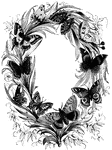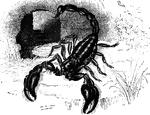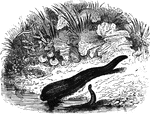
Acarida
"An order of the class Arachinida, includes those insects, as the mites, ticks, itch-insects, etc.,…
Acinetæ
"An order of the class Infusoria, the adult members of which have no cilia and no proper mouth, and…

Giant Panda
"Æluropus melanoleucus- A remarkable genus of carnivorous quadrupdes of the arctoid series of the order…

Pheasant Feather
"Feather from Argus Pheasant. (a,d, main stem; d, calamus; a, rachis; c,c,c, vanes cut away on right…

Agama
"Agama brachyura-A family of saurian reptiles, order LAcertilia, superfamily Agamoidea."-Whitney, 1902

Clio borealis
"The species of the genus Clio, belonging to this order, exist in prodigious numbers in the…

Agave
"Century-plant. A large North American genus of plants, of the natural order Amaryllidaceæ, chiefly…
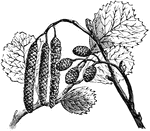
Alder
"The popular name of shrubs and trees belonging to the geenus Alnus, natural order Cupuliferæ."-Whitney,…
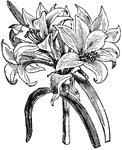
Belladonna Lily
"Of genus Amaryllis- A genus of bulbous plants, natural order amaryllidacæ, with large, bright…

Aardvark
"Aard-vark is a burrowing insect-eating animal of the order Edentata found in South Africa. The name…

Geranium Plant Louse
"Aphis; a genus of small plant-sucking insects, of the family Aphididæ and order Homoptera."-Whitney,…

Apple Louse
"Aphis; a genus of small plant-sucking insects, of the family Aphididæ and order Homoptera."-Whitney,…

Long-Eared Bat
"Bat is the common name of all animals of the class mammalia which are furnished with true wings, and…
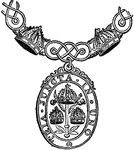
Badge, Order of Bath
"Order of the Bath, in heraldry, etc., an order of knighthood, so called because the recipients of the…

Beaver
"The Beaver is a quadruped of the order Rodentia, or gnawers, the only species of its genus. It is very…
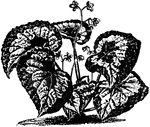
Begonia Rex
"Begonia is an extensive genus of succulent-stemmed herbaceous plants, order Begoniaceæ, with…
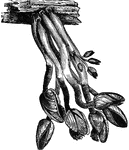
Barnacles
"The Common Barnacle, Lepas anatifera, perhaps the best-known example of the order, generally…

Head of Chameleon
"Chameleon is a genus of reptiles belonging to the Saurian or lizard-like order, a native of parts of…

Grecian Doric Capital
"The Doric Order is, in architecture, the second of the five orders, being that between the Tuscan and…
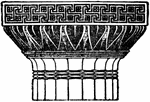
Grecian Doric Capital
"The Doric Order is, in architecture, the second of the five orders, being that between the Tuscan and…

Grecian Doric Capital
"The Doric Order is, in architecture, the second of the five orders, being that between the Tuscan and…
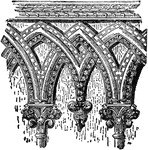
Drontheim Frieze
"A Frieze, in architecture, is that portion of the entablature which is between the architrave and the…

Roman-Doric Frieze
"A Frieze, in architecture, is that portion of the entablature which is between the architrave and the…

Roman-Doric Frieze
"A Frieze, in architecture, is that portion of the entablature which is between the architrave and the…
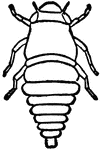
Larval Frog Hopper
"Frog Hoppers are ranked under the homopterous sub-order of insects. The name of frog hopper refers…
Frog Hopper on Leaf
"Frog Hoppers are ranked under the homopterous sub-order of insects. The name of frog hopper refers…

Adult Frog Hopper
"Frog Hoppers are ranked under the homopterous sub-order of insects. The name of frog hopper refers…

Tinoceras
"Tinoceras, or tinotherium, is a genus of mammals now extinct, found in the Eocene, and representing…
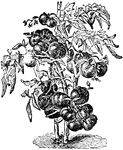
Tomato Plant
"Tomato, or Love Apple, is a plant of the natural order Solanaceæ. It is one of a genus of several…
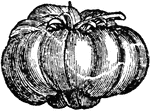
Tomato
"Tomato, or Love Apple, is a plant of the natural order Solanaceæ. It is one of a genus of several…
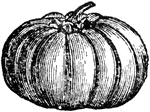
Tomato
"Tomato, or Love Apple, is a plant of the natural order Solanaceæ. It is one of a genus of several…
!["A Tooth is one of the hard bodies of the mouth, attached to the skeleton, but not forming part of it and developed from the dermis or true skin. True teeth consist of one, two, or more tissues differing in their chemical composition and in their microscopical appearances. Dentine, which forms the body of the tooth, and 'cement,' which forms its outer crust, are always present, the third tissue, the 'enamel,' when present, being situated between the dentine and cement. The incisors, or cutting teeth, are situated in front. In men there are two of these incisors in each side of each jaw. The permanent incisors, molars, and premolars are preceded by a set of deciduous or milk teeth, which are lost before maturity, and replaced by the permanent ones. The canines come next to the incisors. In man there is one canine tooth in each half-jaw. The premolars (known also as bicuspids and false molars) come next in order to the canines. In man there are two premolars in each half-jaw. The true molars (or multicuspids) are placed most posteriorly. In man there are three molars in each half-jaw, the posterior one being termed the wisdom tooth. The figures [in the illustration] refer to months after birth."—(Charles Leonard-Stuart, 1911)](https://etc.usf.edu/clipart/15200/15256/teeth1_15256_mth.gif)
First Teeth
"A Tooth is one of the hard bodies of the mouth, attached to the skeleton, but not forming part of it…
!["A Tooth is one of the hard bodies of the mouth, attached to the skeleton, but not forming part of it and developed from the dermis or true skin. True teeth consist of one, two, or more tissues differing in their chemical composition and in their microscopical appearances. Dentine, which forms the body of the tooth, and 'cement,' which forms its outer crust, are always present, the third tissue, the 'enamel,' when present, being situated between the dentine and cement. The incisors, or cutting teeth, are situated in front. In men there are two of these incisors in each side of each jaw. The permanent incisors, molars, and premolars are preceded by a set of deciduous or milk teeth, which are lost before maturity, and replaced by the permanent ones. The canines come next to the incisors. In man there is one canine tooth in each half-jaw. The premolars (known also as bicuspids and false molars) come next in order to the canines. In man there are two premolars in each half-jaw. The true molars (or multicuspids) are placed most posteriorly. In man there are three molars in each half-jaw, the posterior one being termed the wisdom tooth. The figures [in the illustration] refer to years after birth."—(Charles Leonard-Stuart, 1911)](https://etc.usf.edu/clipart/15200/15257/teeth2_15257_mth.gif)
Second Teeth
"A Tooth is one of the hard bodies of the mouth, attached to the skeleton, but not forming part of it…

Double Tuberose
"Tuberose (Polianthus) is a genus of plants of the natural order Liliaceæ. The plant is in high…

Valerian
"Valerian is an order of herbs or rarely shrubs belonging to the division of monopetalous dicotyledons…
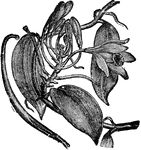
Vanilla Planifolia
"Vanilla is a genus of epiphytal Orchideæ, natives of tropical America and Asia. They are distinguished…
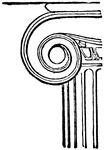
Volute of the Ionic Capital
"A kind of spiral scroll used in Ionic, Corinthian, and Composite capitals, of which it is a principal…

Volute of the Corinthian Capital
"A kind of spiral scroll used in Ionic, Corinthian, and Composite capitals, of which it is a principal…

Hemlock Water Dropwort
"Water Dropwort is a genus of plants of the natural order Umbelliferæ. A number of species are…
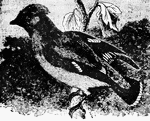
Waxwing
"The Waxwing is an insessorial bird belonging to the dentirostral section of the order. It derives its…

Whale
"Whale is a name that may be taken as equivalent to Cetacean, and applied to any member of that order…

Yucca
"Yucca is a genus of American plants, natural order Liliaceæ popularly known as Adam's needle.…

Superficial Muscles of the Body
"A single muscle rarely or never contracts alone, but always in harmony with a number of other muscles.…
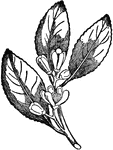
Lemon Branch
"The Lemon is the fruit of a small tree belonging to the same natural order as the orange. There are…
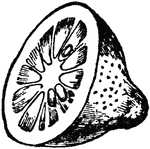
Lemon Cross-section
"The Lemon is the fruit of a small tree belonging to the same natural order as the orange. There are…
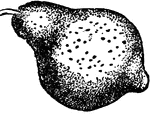
Lemon
"The Lemon is the fruit of a small tree belonging to the same natural order as the orange. There are…

Badge of the Loyal Legion
"The Military Order of the Loyal Legion is the first society formed by officers honorably discharged…

Myrtle
"Myrtle is a genus of plants, natural order Myrtaceæ, consisting of aromatic trees or shrubs,…
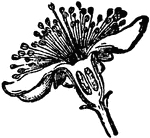
Myrtle Flower
"Myrtle is a genus of plants, natural order Myrtaceæ, consisting of aromatic trees or shrubs,…
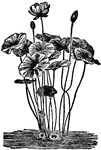
Nelumbium
"Nelumbium is the typical and only genus of the order Nelumbiaceæ. The species are remarkable…

Hand seat
"Improvised Hand Seats: the Three-Handed Seat. THe usefull three-handed seat is made by one bearer grasping…

Chamaerops Humilis Palm
"Palm is a natural order of endogenous plants, the products of which are of extreme importance and utility…
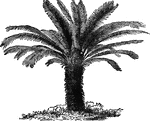
Cycas Revoluta Sago Palm
"Palm is a natural order of endogenous plants, the products of which are of extreme importance and utility…

Badge of the Order of St. Patrick
"St. Patrick, or Patricius, is the apostle or patron saint of Ireland; said to have been born near the…
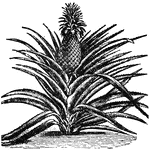
Pineapple
"Pineapple is a plant of the natural order Bromeliacæ. The flowers rise from the center of the…

